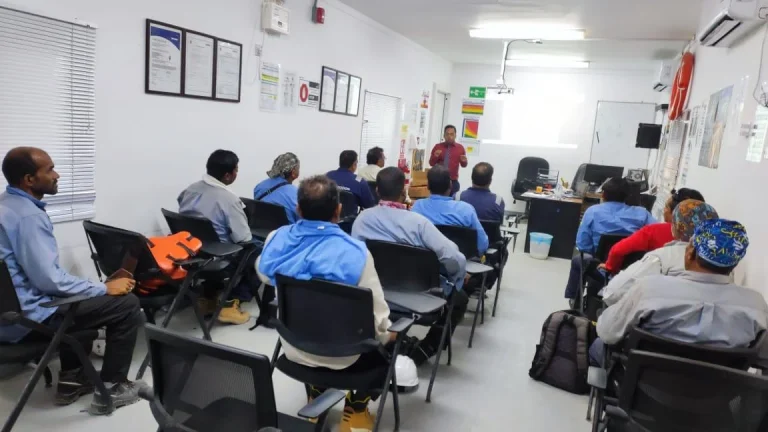HAZOP Study Guide
Hazop full form in safety is Hazard and Operability Study is a commonly used method for analyzing risks. It is applicable across various industries, but it is particularly popular in the chemical, processing, and energy sectors.
This process involves a structured workshop where experts from different disciplines examine the design, operation, or implementation of systems. They separate it into smaller components called nodes or sub-systems and use predefined parameters and guidelines to identify and assess potential hazards.
A HAZOP is a valuable tool for understanding and addressing process risks in the design and operation of a processing facility. However, the effectiveness of these Hazard and Operability sessions depends on the experience and expertise of the facilitation teams.
What is the HAZOP Training Course?
The basic definition of a HAZOP training course is, that it is a program where people learn about Hazard and Operability Studies . These studies are used in industries like chemicals and energy to find potential problems in how things work and make them safer.
During our Hazard and Operability training, people will definitely learn about how to conduct Hazard and Operability sessions, hazop analysis, and hazop study reports. In our training, people will also learn how to find problems, understand how serious these problems are, and find different ways to solve them.
The main goal of our training is to teach people about how to lead Hazard and Operability sessions and make sure that industrial processes are safe and work smoothly. When this course is about to end, you will have a practical assessment. After the completion of this practical assessment, you will receive a certification for our training.

Course Outline
This course is beneficial for those experienced in the Hazard and Operability technique, including process safety engineers, production engineers, and project engineers.
| Topics | Content Description |
| Introduction to Hazard and Operability | Understanding the purpose and principles of Hazard and Operability studies |
| Hazard and Operability Methodology | Detailed explanation of the Hazard and Operability process, including node identification and time estimation |
| Risk Assessment Techniques | Overview of risk matrices, risk graphs, LOPA (Layer of Protection Analysis), and SIL (Safety Integrity Level) methods |
| Hazard and Operability Study Leadership | Effective leadership during Hazard and Operability sessions, team dynamics, and facilitation techniques |
| Recording Style and Recommendations | Developing recommendations based on study findings |
| Final Report and Action Management | Creating the Hazard and Operability study report and implementing recommendations |
| Delta Hazard and Operability Technique (Online Course Only) | Application of the Delta Hazard and Operability technique for re-validating process hazard analysis |

How to Register for the HAZOP Training Course?
Certification for HAZOP Course
When you complete this hazop course training then our company which is accredited by TVTC and IADC offers you a certification of your abilities for successfully completing the Hazard and Operability course.
This certification will be issued to you after a practical assessment of this training course. Kindly note that you have to attend the whole course carefully and must complete the assessment test to achieve the certification of Hazard and Operability training from a well-known company.

Hazop Study Report and Guide
A HAZOP study report is a detailed document that helps businesses identify potential risks in their processes, especially in industries like manufacturing or chemical production. This report comes from a HAZOP study, which stands for Hazard and Operability Study. It involves a team of experts examining parts of a process to spot where things might go wrong and what the consequences could be. The goal is to find ways to reduce these risks. The HAZOP report is essential because it provides clear guidelines on how to make processes safer. It’s a tool that helps companies keep their operations running smoothly and safely, protecting both their workers and the environment. Using such a report can also help businesses comply with safety laws and regulations, ensuring they maintain a good reputation and avoid legal issues.
Hazop Guide Words and Examples
It involves a team of experts examining different parts of a process to identify where things might go wrong and what the consequences could be. The goal is to find ways to reduce these risks, making processes safer and more efficient.
Examples of HAZOP Study with Guide Words
Chemical Reactor Overheating
Pipeline Blockage
Incorrect Mixing Ratio in a Chemical Mixer
Tank Overflow
Failure to Open a Safety Valve
Why Choose Us?
we have trained thousands of students in Saudi Arabia since 2014. We have partnered with big companies and provided training to their employees too. Our institute is accredited by TVTC and IADC, which confirms that our training programs meet international standards of quality and relevance. Our instructors bring real-world experiences to the classrooms, who are giving you practical skills for your career. When you choose us, you are choosing quality training that will definitely help you to succeed.








